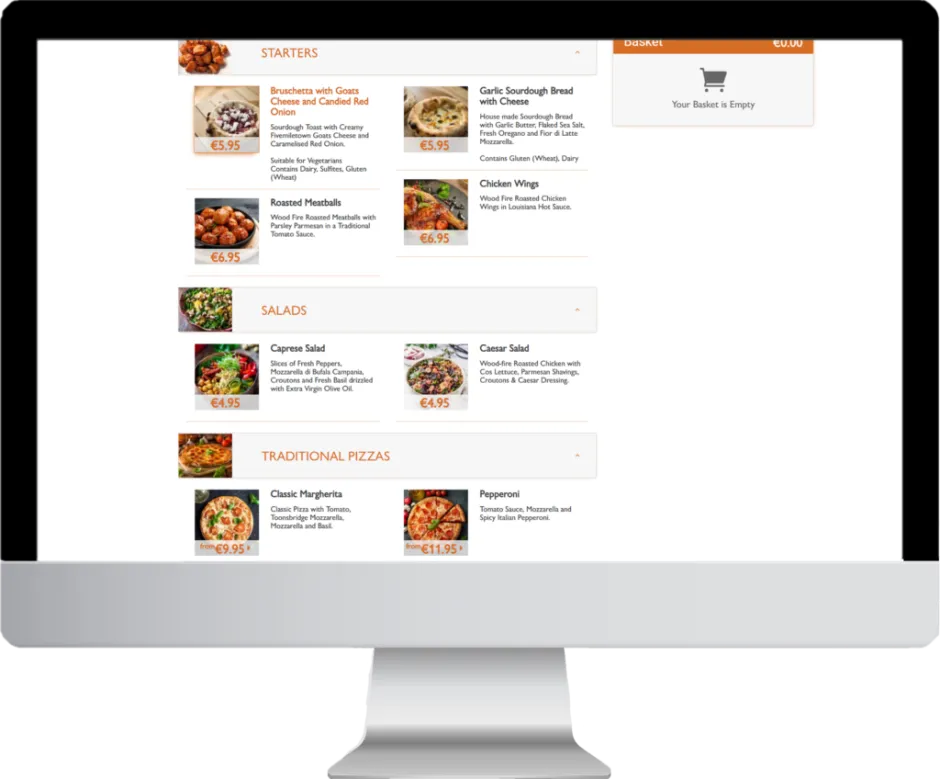
Meet Sandra, she is a regular customer at her favourite steakhouse. As the restaurant was popular in her neighbourhood, there was a time when she had to wait to place her order. Today, with a few clicks and within a few minutes, she places her order using the self-service kiosk. It’s convenient, fast and offers a pleasant dining experience.
In this technology-centric world where the on-demand economy is thriving, customers seek an optimised life where everything is expected to be faster, simpler and better. They want speed and convenience of service and perceive value not only in terms of price, but expect a fast and comfortable experience.
In the restaurant industry, online ordering has become the new normal. A click or a swipe is all that customers expect to get their food delivered. With the introduction of kiosk touchscreen technology, the absence of human interaction makes the online menu the first point of contact that your customers will have with your restaurant. Whether on mobile applications, websites or self-serving kiosks, your online menu will serve as an interface between your restaurant and customers. It will be your first and only opportunity to win customers.
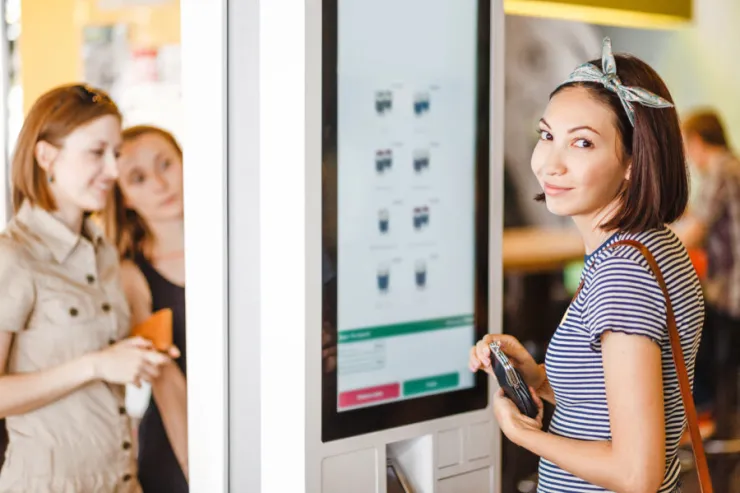
As diners tend to scan through the menu, you need to make sure all aspects of your menu are strategically developed, from the costing, pricing, placement of items to menu design. While designing an online menu is an art that highlights your high-profit items, there is also a science behind creating a well-balanced menu, one that includes your profit margin and food costs. Let’s take a look at different pricing methods that will help you set the right prices.
4 Pricing Methods to Create Your Perfect Online Menu
Create a well-balanced menu that accommodates food cost and profit margins.
Pricing food is as much a science as it is an art. They say the price on your online menu would be what customers are willing to pay. This being partially true, there is a simple calculation that needs to go behind devising the food price in an online menu and there are many ways to approach it. Based on your type of business and market environment you can choose the best pricing method that works for you, whether it’s based on the ideal food cost percentage, the ideal profit margin, pricing based on the demand and supply, or competition-driven pricing.
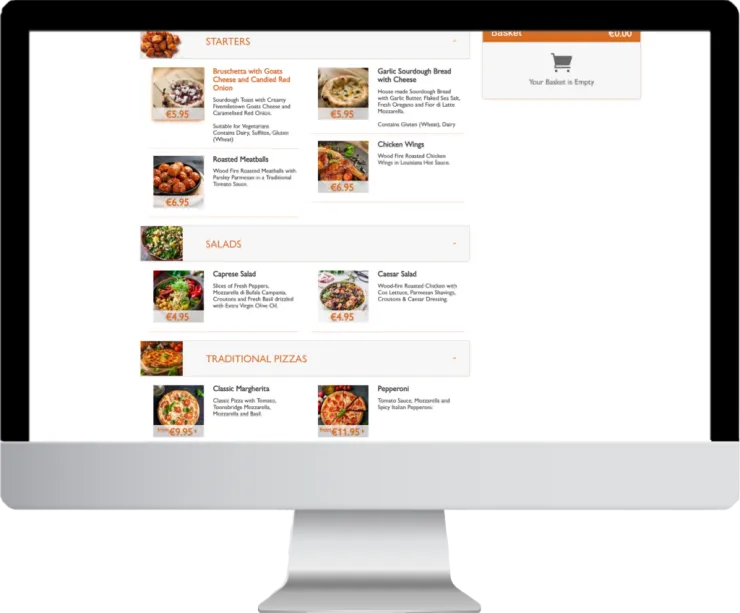
Pricing Method 1 – Online menu prices based on the ideal food cost percentage
Calculate your food cost percentage
The first step in creating your online menu is to determine the product cost of every item. Given that the costs may vary over some time regular updates should be made to the product costs. There are many cases where the costs are approximately calculated based on the most expensive ingredients and some also set prices based on competitors. While this may work with experienced restaurants that have a predictable business, you may run the risk of setting low prices without a clear idea of the product costs.
Before beginning the process of calculating the food cost and setting the price for your online menu, take into account the following types of costs.
- Direct costs – Includes the costs that you would incur to make the food. It would typically include what you pay for the raw material and other costs such as packaging, food waste (meat shrinkage), portion sizes, and staff salary. Keep in mind that food costs related to vegetables, fruits and meat could fluctuate based on seasons and this needs to be accounted for in the prices.
- Indirect costs – Usually includes the costs indirectly related to your business that add to the value and quality of service, such as utility bills (electricity, water, Internet, etc.). This would also include labour costs an example of which could be a high-value dish that involves intensive labour and prepping time.
- Delivery costs – Typically includes the packaging, delivery staff costs, fuel costs, and administrative costs.
- Overhead expenses – This includes the costs that you incur to operate your restaurant. It could include costs incurred to develop and design an online menu and website, to create a pricing strategy, and to develop a marketing plan.
Here’s a quick way to calculate the cost of each product:
- At the beginning of the week, make a list of all the food material you have in storage.
- At the end of the week, make a list of additional food supplies purchased.
- Record the value of each item.
- Determine your total food sales through the week.
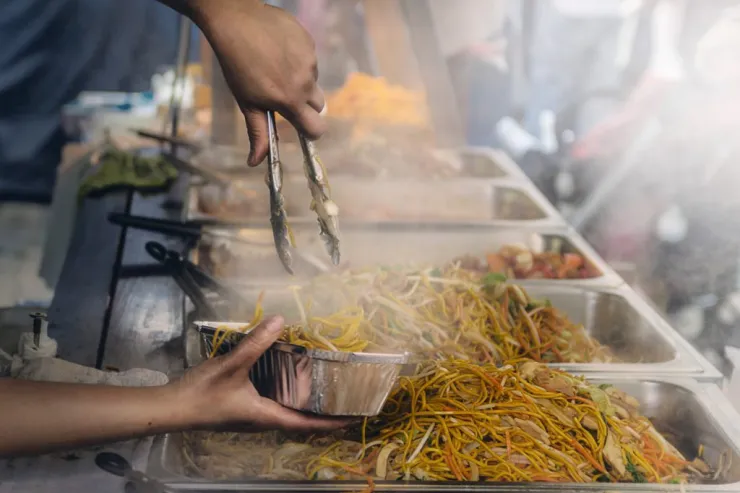
You can then calculate your food cost percentage using this formula:
Food Cost Percentage = (Beginning Inventory + Additional Purchases – Ending Inventory) / Food Sales
Follow this process every week to determine your overall food cost percentage over a period of time. To avoid manually recording and tracking of inventory and sales there are several inventory management applications and POS systems to help you manage, monitor and analyse inventory, costs and sales.
Calculating the food cost percentage is crucial to optimise costs and achieve the highest possible profits. While the process of calculating food cost may seem elaborate, missing out on this process could lead to miscalculating your online menu prices which could consequently lead to big losses. Remember, your online menu is what customers will see first and it is the key to your revenue. For example, say Barry owns a successful restaurant, serving around 300 customers every day. By not paying attention to his food costs, his menu prices are quoted 50 cents lower. The revenue that Barry could lose in a year adds up to approximately €55,000. Pocket change adds up over time and in the competitive restaurant business environment, every cent counts.
Calculate your online menu price
Once you know your food cost percentage, which for most restaurants is on an average of 25% to 35%, and the raw food cost per item, you can calculate your actual menu price using the following formula:
Menu Price = Raw Food Cost per Item / Ideal Food Cost Percentage
For instance, say that your ideal food cost percentage is 28% and your raw food cost is €2 for a farm salad on your menu. Using the formula, your ideal menu price for a farm salad would be €7.14 (2/.28). You can round off the price of €7 to make it a clean number.
Pricing Method 2 – Online menu prices based on the ideal profit margin
When deciding on a price for an item, the multiplying factor is essentially your profit margin. A 50% gross margin on an item means that you will earn 50 cents on the price of the dish, while the rest would be attributed to the other costs and expenses.

When calculating your margin, it is also important to know your price range of each item. For example, the price of different steak dishes could be within the range of €25 to €45 and you need to know the profit margin for the entire range. Once you know that, a study of your market can give insights into what your customers are willing to pay. In this way, you can fix a price that not only accounts for your margin but is reasonable for your customers as well.
To calculate your price based on your ideal profit margin you can use the following formula:
Ideal Profit Margin = (Menu Price – Food Cost) / Menu Price
Taking an example of an instance where you trying to understand if the price of the steak on your menu is according to the profit margin you want to make. Say that your ideal profit margin is 70%, your raw food cost to make the steak is €10 and the price range is between €25 and €45. Using the formula, for the steak priced at €25 will get you 60% profit margin compared to a price of €34 which can get you your ideal margin of 70%.
- (€25 -€10) / €25 = 60%
- (€34 -€10) / €34 = 70%
In the example above you would ideally choose €34 as the menu price of your steak given that your goal is to get a 70% profit margin.
While higher margins may be the goal, one of the ways to increase it without directly impacting customers is to reduce your costs. Without compromising on customer experience, there are many cost-saving options you can opt for, from being smart about purchasing raw materials, efficient production, substituting ingredients without affecting quality to altering portion sizes.
Your profit margin will also depend on the type of restaurant you have. A restaurant providing high quality ambience and service would have higher margins compared to a value-for-money based restaurant. For a restaurant that gets business mainly from delivery or take-out orders, they can achieve higher margins by leveraging the fact that they have lower labour expenses, occupancy costs, and operating expenses.
Pricing Method 3 – Competition-driven pricing
Another way to set your online menu prices is to use the prices prevalent in the market or the prices set by the local competition as your baseline. When using competition-driven pricing keep in mind that you need to compare prices with a similar type of business to get the best benchmark. Conduct thorough research to identify direct competition similar to your business. When making a comparison, keep in mind the following:
- Compare businesses with similar operating expenses- A restaurant that owns the property would have lower occupancy costs compared to a rented space.
- Compare value provided instead of menu prices – Unless you are offering something unique your prices need to be aligned to market rates. Some of the instances where you could alter your prices could be, if you deliver in a neighbourhood that your competition doesn’t cover, or if you deliver faster than your direct competition or if you make a dish that nobody else serves.
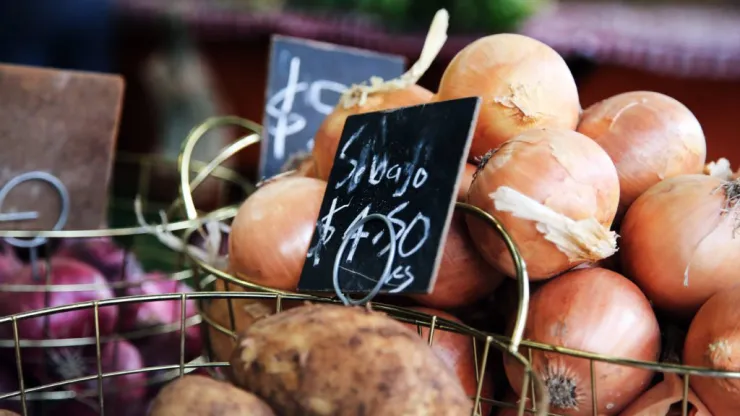
Pricing Method 4 – Online menu prices based on demand and supply
The process of setting prices for your online menu has to constantly evolve. There are many reasons why your prices may vary. Demand for products could vary in different seasons and prices could be set based on the supply and availability of items, like in the case of fresh seafood and imported items. If you observe that customers are unwilling to pay a high price for expensive products available offseason, it is best to leave it out of your menu.
Another instance that could determine your menu prices is location. If your restaurant is set in a unique location, like near a commercial/business area, an upmarket neighbourhood, a sports stadium or a shopping area, where footfall and demand are high, you can set your prices higher.
Setting your prices based on supply and demand requires a very good understanding of the market. Only if you have an idea of what sells, where it sells, how much of what sells, and why it sells, can you set prices based on supply and demand. Without this knowledge, the other methods of fixing menu prices would be advisable.
Factors to Consider When Devising Pricing Strategies
Avoid common mistakes. Optimise food cost percentages. Set the right price.
- Make an accurate account of your ingredients - One of the most common mistakes when setting food prices is creating an inaccurate ingredient list. Pay special attention when making the list of ingredients and include your chef in this process if necessary. Keep in mind the type of ingredients used for special dishes, the exact amount, and the quality of raw material required. If you get this right the first time it will be easier to alter it in the future. Making an accurate account of the ingredients will help you to understand the costs involved and set a price to make a well-balanced menu.
- Use technology – There are several software programs, application and POS devices that you can use to make inventory management and record of sales easier. Not only does using technology reduce manual errors it makes the process more efficient. It also offers more flexibility to monitor, analyse and make improvements. On the customer-facing side, there are several mobile-friendly applications that you could use to make the ordering experience simpler and better for your customers. Several customer relationship management tools can also help you create a meaningful connection with your market.
- Explore all cost-saving opportunities – As mentioned earlier, one of the ways to keep a higher margin is to reduce costs. Try to find wholesale sellers in order to reduce the prices of raw material. If your food costs are high, reduce freebies such as bread and butter to balance costs and profits. Keep an eye on portion control. Every ingredient in a dish must be measured by weight or by volume. In this way, you can reduce food wastage and labour costs.
- Choose your price based on your restaurant’s image – The prices on your menu indicate the type of restaurant and demographic you aim to attract. Upscale restaurants typically round off prices with the knowledge of the fact that their customers are mainly looking for a quality dining experience. Family-based restaurants tend to set prices just below the nearest whole number because they know their customers are looking for affordable yet quality options to dine out. This also works when setting prices for combo deals and delivery options.
- Pricing for delivery service – In this age of on-demand service, most restaurants have delivery service options. When setting prices for a delivery service option keep in mind to establish a minimum amount for an order within a set delivery area. For better quality control, choose only a select number of items from your menu for delivery service. Take into account the expense and the number of staff required to deliver orders. With many food delivery applications available in the market, explore opportunities to partner with them keeping in mind the quality they offer and their cost-effectiveness.
- Use menu psychology and engineering – Guide your customers to high-profit items on your menu. Especially in your online menu, placement is paramount as customers tend to scan through them. With smart designs, you can capture the attention of your customer without creating an overwhelming menu experience.
Design the Perfect Menu with Menu Psychology and Engineering
Highlight your most popular and profitable items
109 seconds is all you have to make a good first impression. That’s the approximate amount of time diners spend scanning through a menu. With online ordering and self-ordering kiosks gaining speed, your online menu is the first and only chance you will have to get your customers to place an order. Here’s where menu psychology and engineering play an important role in promoting your high margin items.
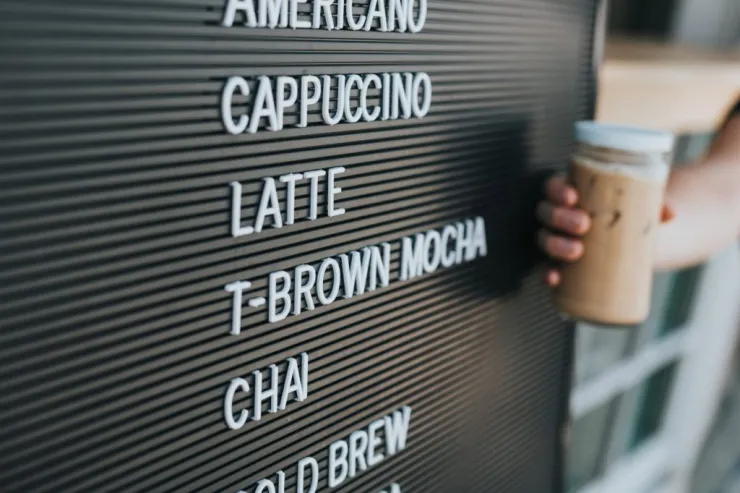
The science of menu psychology and engineering involves analysing and designing your online menu with the aim of maximising your returns. Using menu psychology strategies which involve the design and placement of items, you can highlight your most profitable items in the most effective way. Consider these aspects when designing your online menu:
- Analyse your menu – Identify those items on your menu which are most popular and profitable. Choose a specific period and record the volume sold and the profits earned on each item of your menu.
- Group each item – As a part of menu engineering, group your menu items that have different levels of popularity and profitability. For instance, highly popular and profitable items like steaks or pasta need to be highlighted on your menu. Whereas other popular dishes that may have lower profitability also need to stay on your menu. You could, however, alter the portion sizes or use less expensive ingredients to keep a fair profit margin.
- Design and structure your menu strategically – Once you have grouped your menu items, it would clear which item you would like to highlight. Make sure when you design your menu to account for the ‘Golden Triangle’, which according to psychologists is the way a user’s eyes tend to move when browsing through a menu. While online menu designs may come with templates, make your designs to showcase your high-value items. Use visual design features such as photos and graphics to capture attention. Keep in mind that it is advisable to highlight only one or two menu items in each section to get maximum results.
- Depict pricing information thoughtfully – When including the price on your online menu, keep it visible yet discreet. Use the same size and type of font as the rest of your menu so that customers can view it without focusing on it. Avoid using currency indicators as it often reminds the customer that their spending money. Avoid using pricing trails or the dotted lines that connect your description to your price because they also tend to direct the focus towards the price. If you are highlighting high-profit items, place a ‘decoy’ item next to it. Typically, a decoy item is set to be an overly expensive dish. This will help customers to make a comparison and will make the high-profit item seem to be more reasonably priced.
The Way Ahead is to Leverage Technology
In this technology-driven world, every facet of living involves technology in some way or the other. The way customers are interacting with businesses and brands has evolved. In the restaurant industry, as customers place more importance to convenience, technology is widely being adopted.
Catering to the growing market of younger and tech-savvy customers, restaurateurs are using technology to provide better customer experience, from mobile-friendly ordering applications to self-ordering kiosks. They are also using technology to better manage their business, from inventory management software, labour management and tracking applications, delivery management software and point of sale systems.
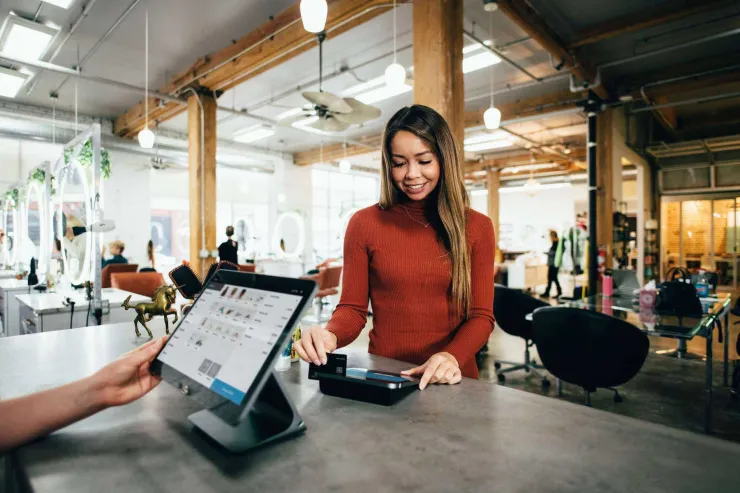
Technology must be the essence of your restaurant management and marketing strategies. The first step is to master the art and science of calculating food costs, setting prices, fixing profit margins, and designing a well-balanced menu. The way ahead is to be technology-centric in order to advance your business, maximise your profit margins and provide your customers with an optimised experience, one that would make their lives simpler, faster and better.

